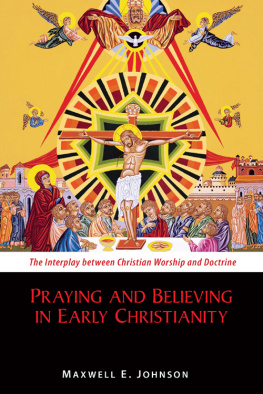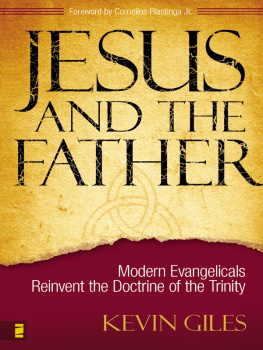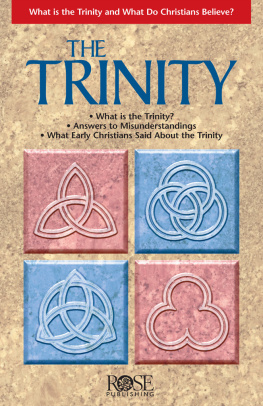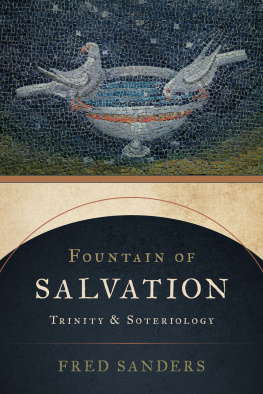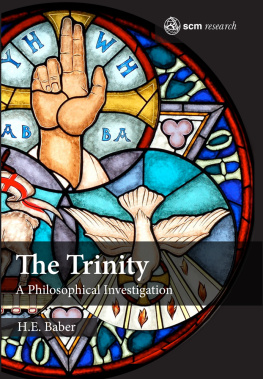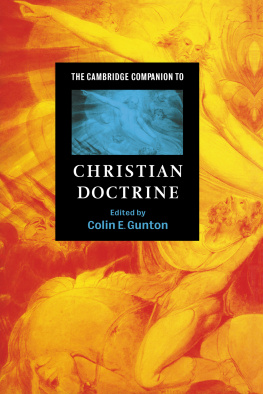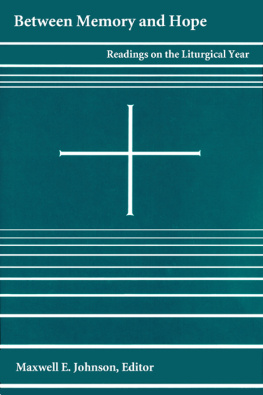Professor Maxwell Johnson of the University of Notre Dame has written a short but fulsome account of the influence of the liturgy on the development of the doctrines of grace, Trinity, Christology, and Mariology in the ancient Church and on early Christianitys moral practices. Entering into current debates in liturgical theology, Johnson challenges claims about liturgy and prayer as primary theology ( lex orandi ) and disagrees with the understanding of orthodoxia as right praise (it is right teaching). Rather, he sees a simultaneous development of both liturgy and dogma in the early centuries in which one should look for the theology embedded in the liturgy and doxology and supplication expressed in theology. While Johnson aimed this book at masters level students, it will be of interest also to his peers, who will find points to challenge precisely because they are so engagingly made.
The Rev. Dr. Frank C. Senn, STS
Finally! A renowned historian of liturgy explores at length the creative interplay between liturgical practice and theological reflection. This has been a desideratum for some time now, especially given the fresh readings of early Christian sources and the glimpses these provide of liturgical practices. In his new book, Max Johnson offers a nuanced, carefully argued, and expertly corroborated look at how doctrine shaped liturgical prayer and how prayer shaped the churchs faith in the early centuries. Mapping the interplay between praying and believing in a multidimensional way, Johnson makes an important and much needed contribution to the ongoing conversation about the relationship between worship and doctrine in the churchs life. I highly recommend this book.
Teresa Berger
Yale Institute of Sacred Music
Yale Divinity School
Maxwell E. Johnson
Praying and Believing in Early Christianity
The Interplay between Christian Worship and Doctrine

LITURGICAL PRESS
Collegeville, Minnesota
www.litpress.org
A Michael Glazier Book published by Liturgical Press
Cover design by Jodi Hendrickson. Cover image: EucharistSacrificial Banquet Icon by Monsignor Anthony A. La Femina, STL, JCD. Used by permission.
Scripture texts in this work are taken from the New Revised Standard Version Bible 1989, Division of Christian Education of the National Council of the Churches of Christ in the United States of America. Used by permission. All rights reserved.
2013 by Order of Saint Benedict, Collegeville, Minnesota. All rights reserved. No part of this book may be reproduced in any form, by print, microfilm, microfiche, mechanical recording, photocopying, translation, or by any other means, known or yet unknown, for any purpose except brief quotations in reviews, without the previous written permission of Liturgical Press, Saint Johns Abbey, PO Box 7500, Collegeville, Minnesota 56321-7500. Printed in the United States of America.
The Library of Congress has cataloged the printed edition as follows:
Library of Congress Cataloging-in-Publication Data
Johnson, Maxwell E., 1952
Praying and believing in early Christianity : the interplay between Christian worship and doctrine / Maxwell E. Johnson.
pages cm
A Michael Glazier book.
ISBN 978-0-8146-8259-3 (pbk. : alk. paper)ISBN 978-0-8146-8284-5 (e-book)
1. WorshipHistoryEarly church, ca. 30600. 2. Church historyPrimitive and early church, ca. 30600. I. Title.
BV6.J645 2013
270.1dc23
2013007002
In Memoriam
R. Kevin Seasoltz, OSB (+ 2013)
Teacher, Colleague, and Friend
Abbreviations
ANF | Ante-Nicene Fathers |
BCE | Before the Common Era |
CE | Common Era |
CSEL | Corpus Scriptorum Ecclesiasticorum Latinorum |
GCS | Die griechischen christlichen Schriftsteller |
LCC | Library of Christian Classics |
LEW | F. E. Brightman, Liturgies Eastern and Western , vol. 1: Eastern Liturgies. Oxford: Clarendon Press, 1896. |
NPNF | Nicene and Post-Nicene Fathers |
PEER | Prayers of the Eucharist: Early and Reformed , edited by R. C. D. Jasper and G. J. Cumming. 3rd rev. ed. Collegeville, MN: Liturgical Press, 1987. |
PG | Patrologia Graeca |
PL | Patrologia Latina |
SC | Sources chrtiennes |
Introduction
I remember hearing part of a conversation between two of my seminary professorsone, a professor of New Testament at the Lutheran seminary where I was enrolled, and the other, a professor of liturgy at the neighboring Roman Catholic seminary, where in the spring semester of 1975 I was taking my first serious course in liturgical historyover the proper place of liturgy in the seminary curriculum. For the Lutheran professor, the place of liturgy was to be included naturally in the Practical Area of seminary education along with parish administration, homiletics, parish education, and pastoral care and counseling, since, in his opinion, the study of liturgy had more to do with the practicalities of presiding at worship than with theology and/or history. For the Roman Catholic faculty member, however, liturgy naturally was to be included in the History and Theology Area of the curriculum both because liturgy constituted an academic discipline in its own right and because he saw liturgy having a historic and foundational relationship to theology and doctrine in general. To my knowledge, this discussion never reached a resolution with courses in liturgy at the Lutheran seminary remaining in the Practical Area and those at the Roman Catholic seminary in the History and Theology Area, although courses in presiding at the rites themselves were taught there within the practical area as well.
This discussion has implications for the question of liturgical theology today along the lines of the classic relationship between liturgy and doctrine, often summarized by the abbreviated Latin phrase of Prosper of Aquitaine (c. 390c. 455): Lex orandi, lex credendi, i.e., the law of praying (is, constitutes, or establishes) the law of believing. For the Lutheran faculty member referred to above, although these words would not have been used, the lex credendi (especially Lutheran confessional and sacramental theology) was to be learned independently of the churchs liturgy and then, perhaps, applied to what one did in liturgy. Hence, to put words in this professors mouth, the relationship was that the lex credendi always established the lex orandi and, of course, the lex credendi was always, therefore, primary. For the Roman Catholic professor, it was the exact opposite, with the lex orandi itself establishing or constituting the churchs lex credendi in the first place, a position argued strongly in recent years by Aidan Kavanagh in his insistence on the need for the use of the verb statuo in Prospers actual phrase, i.e., ut legem credendi lex statuat supplicandi , that the law of supplicating may constitute the law of believing. If, for the Lutheran professor, liturgy was rather superfluous to the overall theological process and, hence, could be easily relegated out of the realm of real theology, for the Roman Catholic professor, liturgy was quite central in and for all areas of seminary formation and pastoral-ecclesial life. It was thus too important to be so easily separated from theology and history and subsumed under practical matters alone.
Next page
